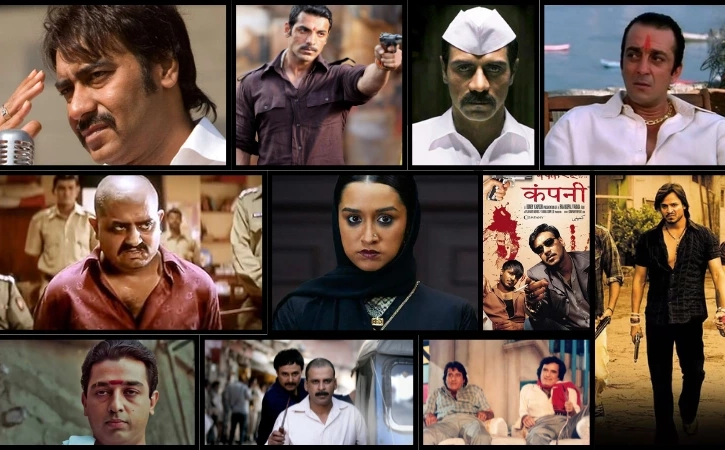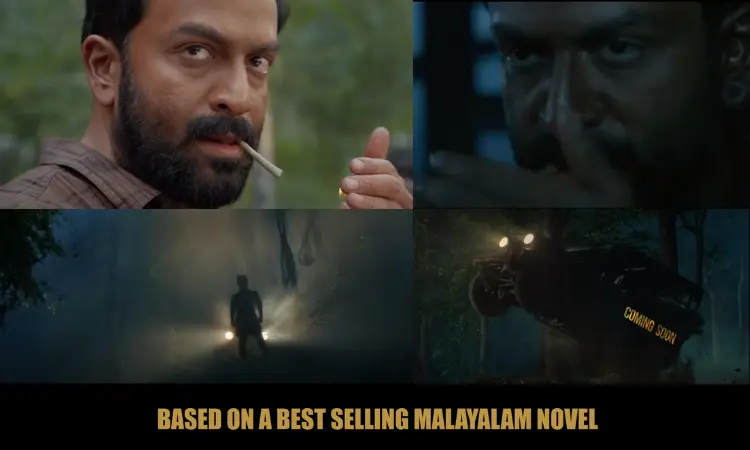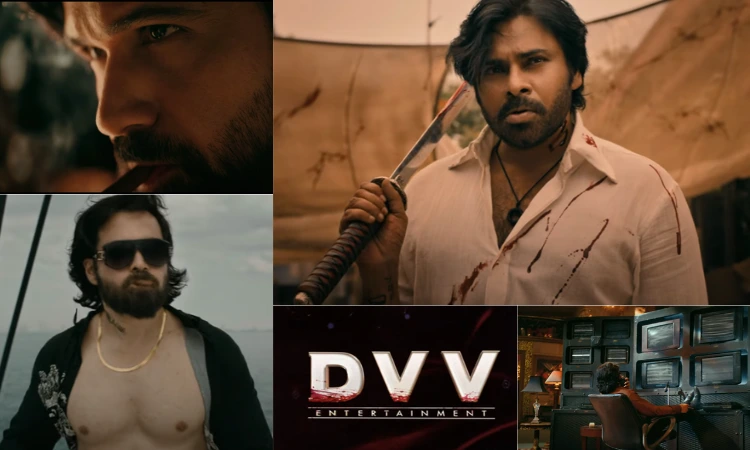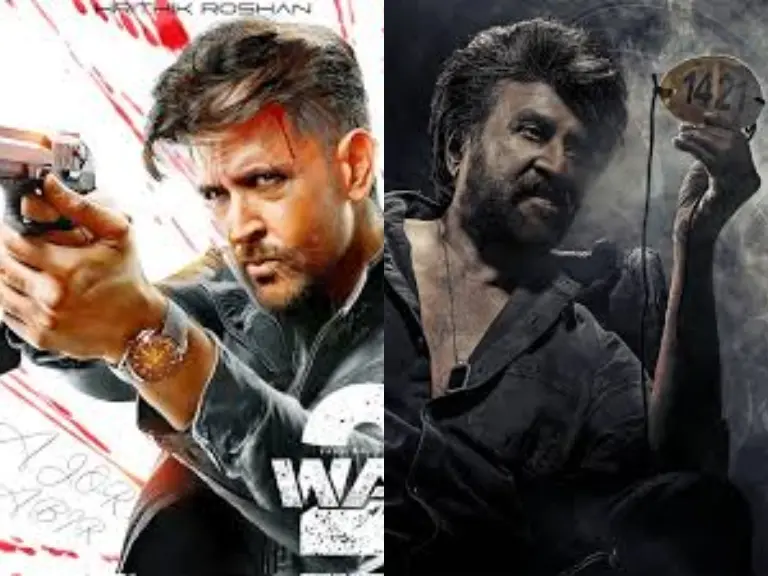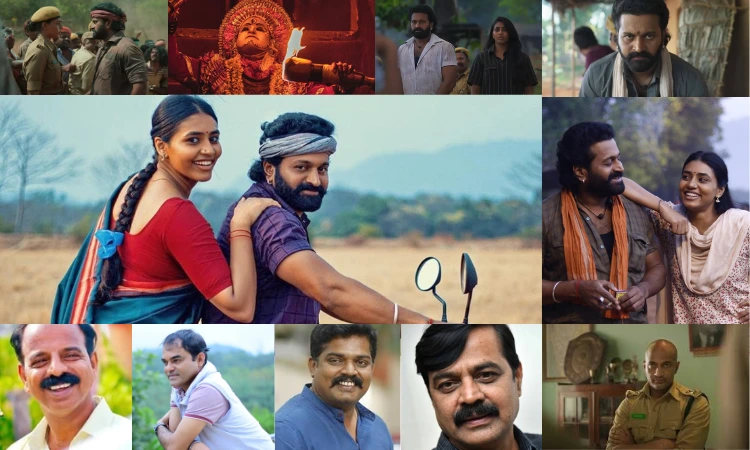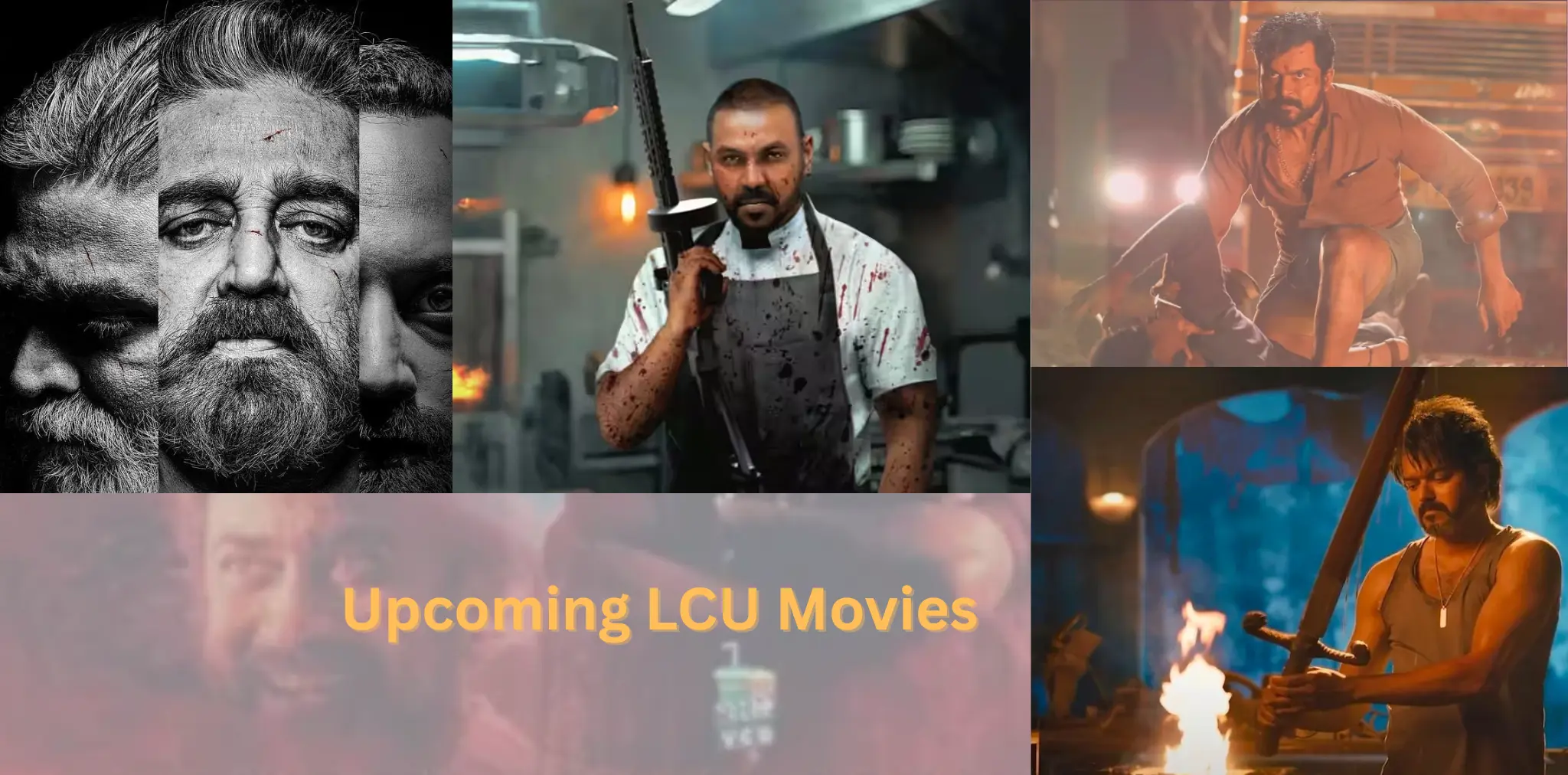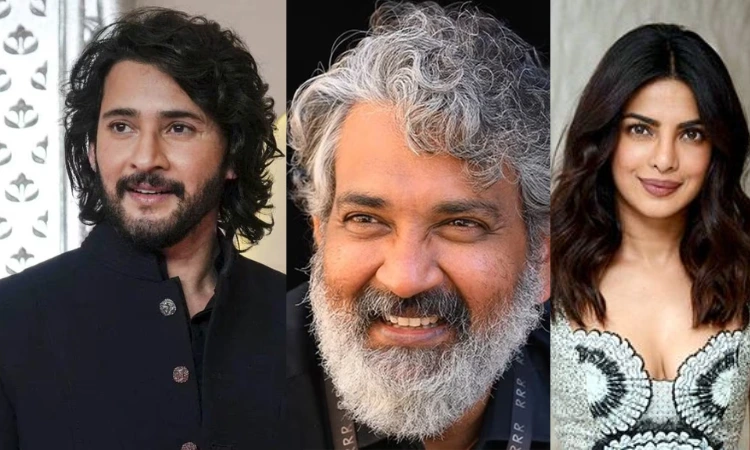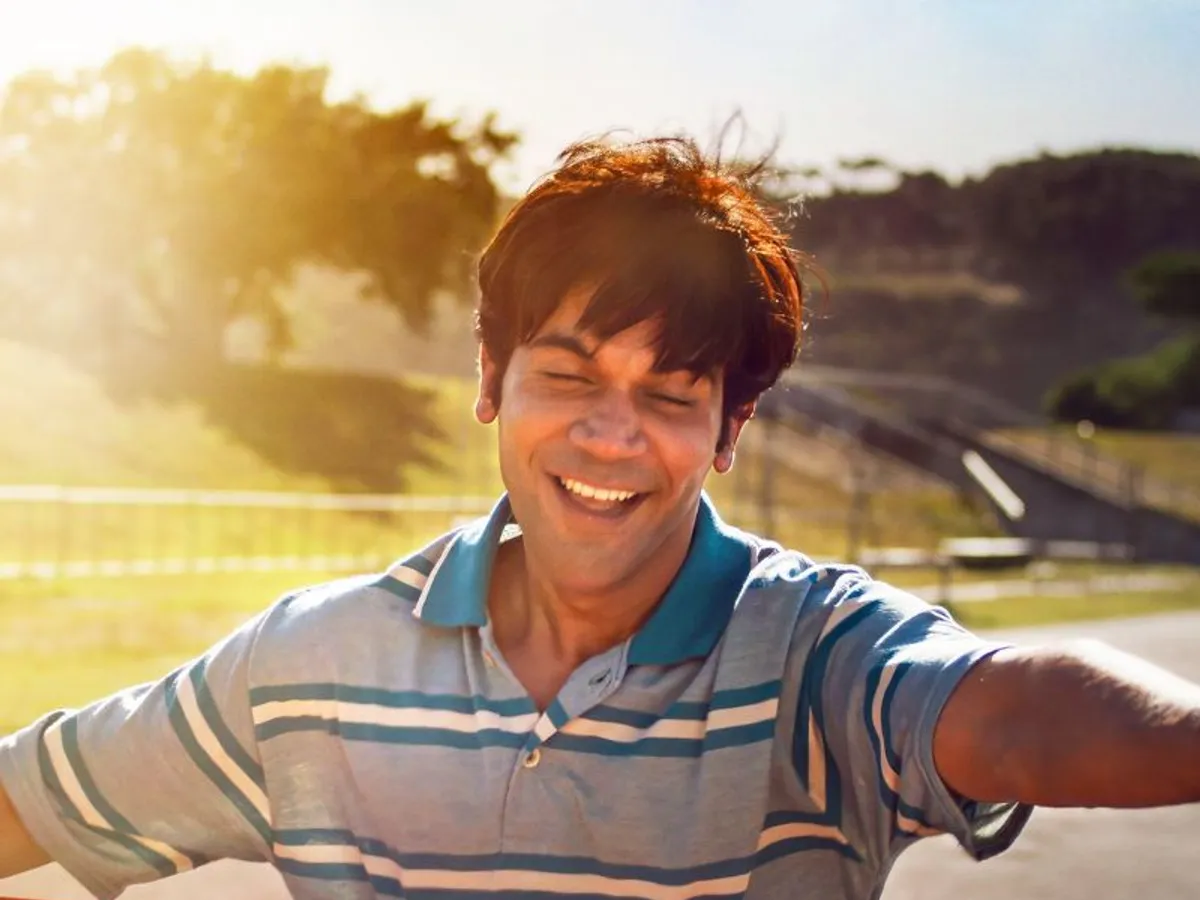- 1 The Evolution of the Gangster Archetype in Indian Cinema
- 2 A Deep Dive into Ten Iconic Films
- 2.1 1. Once Upon a Time in Mumbaai (2010)
- 2.2 2. Vaastav: The Reality (1999)
- 2.3 3. Black Friday (2004)
- 2.4 4. Shootout at Wadala (2013)
- 2.5 5. Daddy (2017)
- 2.6 6. Company (2002)
- 2.7 7. Gangs of Wasseypur (2012)
- 2.8 8. Haseena Parkar (2017)
- 2.9 9. Shootout at Lokhandwala (2007)
- 2.10 10. Nayakan (1987) & Dayavan (1988)
- 3 Conclusion
The Indian gangster film genre is a powerful cinematic tool. It reflects on India’s social, political, and moral landscape. These movies are not just crime thrillers. These films are more than just entertainment. They’re a window into the rise of organized crime in India. They reveal the complex individuals behind it and the societal factors that let it thrive.
This report delves into ten significant Bollywood films inspired by real-life gangsters, exploring how they’ve shaped public perception and transformed complex historical events into cultural narratives.
The Evolution of the Gangster Archetype in Indian Cinema
The portrayal of the gangster in Hindi cinema has undergone a remarkable transformation. The early days saw a romanticized “principled” gangster, often a product of a corrupt system, as seen in the seminal film Nayakan. This archetype gave way to the gritty, corporate-like criminals of the 1990s and 2000s, who were less concerned with a moral code and more with power and profit.
This shift reflects the real-life evolution of the Mumbai underworld, from the era of smuggling dons like Haji Mastan to the brutal, politically-connected D-Company of Dawood Ibrahim. This analysis examines a diverse list of films, each offering a unique perspective on the underworld.
From the docu-drama approach of Black Friday to the multi-generational saga of Gangs of Wasseypur, these movies collectively showcase the dynamic nature of both crime and its cinematic representation.
A Deep Dive into Ten Iconic Films
Here is a comprehensive list of movies and a detailed look at how they capture the essence of their real-life inspirations.
1. Once Upon a Time in Mumbaai (2010)
Directed by Milan Luthria, this stylish film is a fictionalized account of the lives of Haji Mastan, portrayed as Sultan Mirza, and Dawood Ibrahim, as Shoaib Khan. The film’s retro aesthetic and glamorous portrayal of the 1970s underworld create a narrative that is both an homage to old-school gangster films and a commentary on the changing face of crime in Mumbai. It romanticizes the era of principled dons, suggesting that their fall paved the way for more ruthless criminals. The film’s legal battle with Haji Mastan’s family highlights the fine line between creative license and historical accuracy when dealing with real public figures.
2. Vaastav: The Reality (1999)
Mahesh Manjrekar’s directorial debut is a raw and powerful depiction of a man’s descent into the underworld. Starring Sanjay Dutt in a career-defining role, the film is widely believed to be loosely based on the life of Chhota Rajan. The tagline, “The Reality,” underscores the film’s brutal honesty about the impossibility of escaping the criminal world once you’re in it. The tragic climax, where the protagonist’s mother kills him to free him from his suffering, remains one of the most poignant moments in Indian cinema, resonating deeply with audiences and solidifying its cult status.
3. Black Friday (2004)
Anurag Kashyap’s masterpiece stands apart for its uncompromising, documentary-style approach to the 1993 Mumbai bombings. Based on S. Hussain Zaidi’s investigative book, the film meticulously chronicles the events leading up to the blasts and the subsequent police investigation. By using the real names of the perpetrators and police officers, Black Friday blurs the line between fiction and reality, providing a chilling and authentic account of a national tragedy. Its three-year delay due to a court stay order only solidified its reputation for unflinching honesty.
4. Shootout at Wadala (2013)
This film, directed by Sanjay Gupta, dramatizes the life of gangster Manya Surve, culminating in what is considered Mumbai’s first recorded police encounter killing in 1982. While based on S. Hussain Zaidi’s book, the film is openly “fantasized,” leaning into high-octane action and stylized violence. It’s a commercial entertainer that takes a real-life event and molds it into a sensationalist narrative, highlighting how filmmakers use dramatic liberties to create a compelling, though not entirely factual, story for mass appeal.
5. Daddy (2017)
The biopic of Arun Gawli, a local mill worker who became a powerful underworld don and later a politician, is a unique case study in the genre. Unlike other gangsters who fled the country, Gawli remained in Mumbai, earning him the nickname “Daddy.” The film explores the intricate link between crime and politics, showing how a local figure can leverage his community ties to achieve a form of legitimacy, blurring the lines between a criminal enterprise and a political movement.
6. Company (2002)
Ram Gopal Varma directed the important film, Company. It tells a fictional story about a real rivalry. The rivals were Dawood Ibrahim and Chhota Rajan. They are called N. Malik and Chandu Nagre in the movie. The film is famous for showing the underworld realistically. It did not make the gangsters look glamorous. Instead, it showed the underworld as a cold business.
It had power struggles, new partnerships, and backstabbing. This was a big change from older gangster movies that were more romantic. Company started a new trend. This new wave of crime films focused on real-life details and a grittier style.
7. Gangs of Wasseypur (2012)
Anurag Kashyap’s two-part epic shifts the gangster narrative away from Mumbai to the coal mafia of Dhanbad, Jharkhand. Based on the real-life generational conflict between the Khan and Qureshi families, the film is a sprawling saga of violence and vengeance. Its success proved that the genre was not confined to a single city, opening the door for more regional and culturally specific crime narratives in Indian cinema.
8. Haseena Parkar (2017)
This film tells a unique story about the underworld. It is a biopic of Haseena Parkar, Dawood Ibrahim’s sister. The movie shows her becoming a powerful criminal leader after her husband was murdered. It gives a more human, tragic perspective on a family involved in organized crime. This is a different view from the typical D-Company stories that only focus on men.
9. Shootout at Lokhandwala (2007)
Directed by Apoorva Lakhia, this film dramatizes the real-life 1991 Lokhandwala Complex shootout, a high-stakes confrontation between the Mumbai police and gangsters led by Maya Dolas. The film’s intense, high-octane action and ensemble cast popularized the “shootout” subgenre. Along with Shootout at Wadala, it transformed a controversial historical event into a stylized cinematic spectacle, reflecting the public’s fascination with these dramatic police encounters.
10. Nayakan (1987) & Dayavan (1988)
Nayakan and its remake Dayavan are based on a real gangster. His name was Varadarajan Mudaliar. Nayakan is a very influential film. It created the idea of a tragic hero. This hero is pushed into crime by his situation. The movie shows a man’s moral decline, even with good intentions. This paved the way for more complex film characters.
Conclusion
A Reflection on Indian Society The analyzed films collectively offer a powerful commentary on India’s social and political landscape. They serve as a powerful reminder that the distinction between the hero and the villain, the law and the lawless, is often blurred.
These films explore the lives of real-life gangsters. These films show a pattern of violence. They also expose a lot of corruption. They help us understand how society sees its criminal history. The genre has evolved from romantic to gritty. It uses stories of the underworld as a mirror for society.

